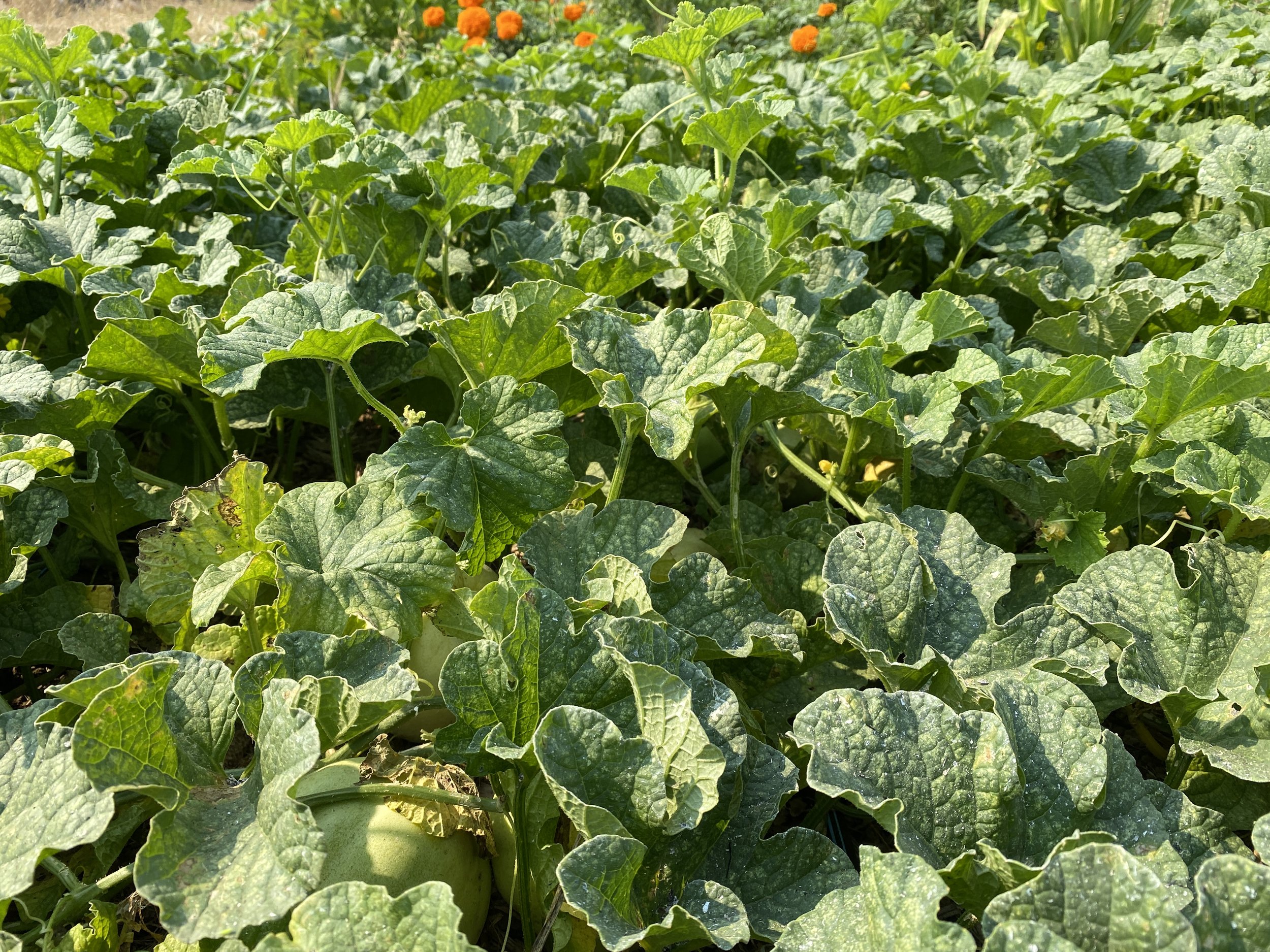Sagwa Chamoe
Sagwa Chamoe, 사과참외, Apple Melon
Cucumis melo var. makuwa
Seeds per Packet: 25
Considered an heirloom in Korea, this variety has been preserved by farmers in Gyeonggi Do. Drought tolerant vines yield apple shaped melons that are sweet, crunchy (when mature), and refreshing.
Considered to be a native variety of melon within Korea, plants are sturdy and vigorous with prolific fruiting capacity. Fruits mature to a beautiful cream/white color, with green flesh that remains crunchy when ripe. Refreshing and sweet reminiscent of Melona ice cream bars. Most native landrace melons decreased in production during the Japanese occupation of Korea, replaced by the sweeter yellow and white striped Euncheon chamoe. This rare heirloom has predominantly been preserved by small farmers in Gyeonggi-do who consider this a regional treasure.
Days to Maturity: 70 days from transplant
Growing Tips: Chamoe are warm seasonal annual crops. They appreciate reasonably fertile soil that is loose and well drained. Being a landrace preserved and developed by peasants, they are quite vigorous in low or no input systems. They can produce throughout the whole season reliably, and so one or two successions will generally keep you rich in melons all summer long. They tend to have a first big flush of fruit, followed by steady fruiting for two or three weeks where you can harvest twice a week. After about 5 weeks of continual harvesting, plants tend to slow a little and push out smaller fruit. You can pick these fruits off to stimulate more vining growth. Plants will also produce a late crop that’s a little lighter than their first few weeks, but of good sized fruit. I’ve heard different recommendations from chamoe farmers regarding pruning. Some suggest pruning to two main leaders, and then continuing to prune after the third node. This directs more energy into fruit. We don’t tend to do this, and think that their substantial vines help direct more photosynthate to fruits as well as fostering more beneficial habitat in the soil. For our seed saving plants we will pick off fruit to direct energy into one or two fruits to mature and save for seed. Harvest when melons turn whitish-green. When a yellow blush develops they will start to soften.
When to Plant: Direct seed once soil temperatures are >70F and when weather has settled. Start indoors 3-4 weeks prior to transplanting in field in 50-cell trays.
Planting Depth: ½”
Spacing: If direct seeding, place 3 seeds every 6”. Thin or transplant at 12” spacing.
Sun: Full.
Water: More drought tolerant than other cucurbits. Depending on soil type can be reasonably dry farmed or solely rain fed. If direct seeding, plant into moisture and wait for germination to irrigate again (unless soil dries too quickly). Deep, infrequent waterings to establish plants and promote rapid growth. Once fruits set and begin to develop, cut irrigation, or reduce to the minimal amount needed to keep plants happy. If your soil has a good amount of organic matter and retains moisture well, these plants can really survive with little supplemental irrigation. But in really sandy, rocky or lean soils, you will need to irrigate more. While able to handle drought stress, they are still a plant, and they still need water to grow.
Grower: Namu Farm, Winters, CA



